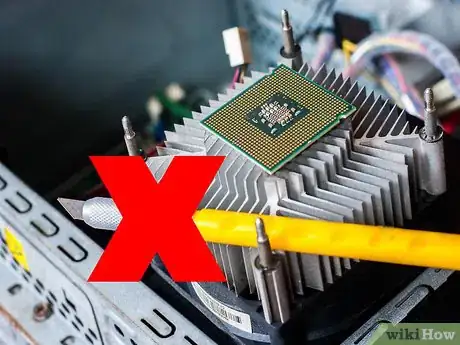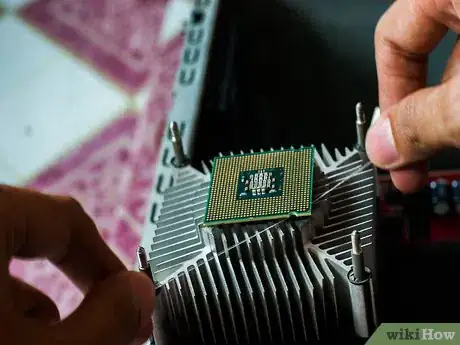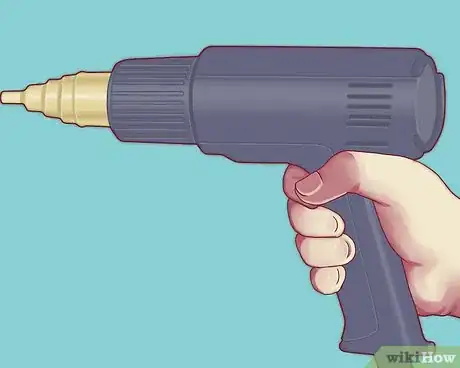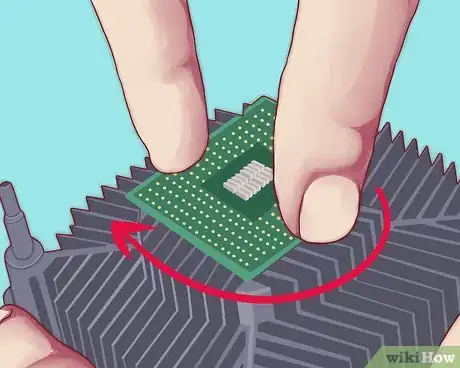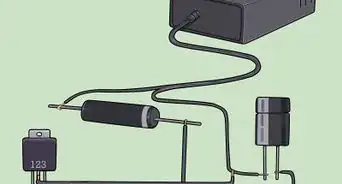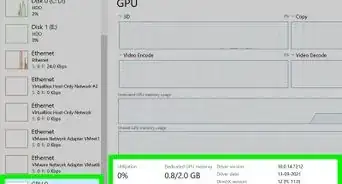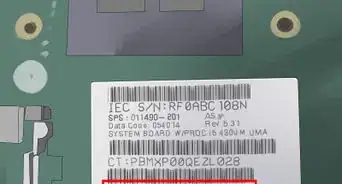X
wikiHow is a “wiki,” similar to Wikipedia, which means that many of our articles are co-written by multiple authors. To create this article, 24 people, some anonymous, worked to edit and improve it over time.
This article has been viewed 267,501 times.
Learn more...
When removing processors, you may occasionally find that it has become fused or stuck to the heat sink (that is, the processor pulls out of the socket while the socket's lever is locked). Reasonable force may not be enough to remove it and, at this point, it is difficult to remove without causing damage to the processor.
Steps
Method 1
Method 1 of 2:
Using the Floss Method
-
1Refrain from prying the processor off or using any metal objects on it. The processor should easily come off the heat sink. Using a razor blade or prying tool, or placing force on it, may damage the processor.
-
2Twist the processor gently. Be careful and try not to bend the pins. Do not apply too much force.Advertisement
-
3Soak the processor and heat sink in isopropyl alcohol (at least 91%) for five minutes. This option will not damage the processor.
-
4Use a long string of dental floss. Gently floss the area between the processor and the heat sink, starting at any corner where the floss is able to penetrate.
- If the floss is flat, hold it flat against the heatsink and slowly work it down between the CPU and heatsink. Having the heatsink facing you will give you the best leverage.
-
5Work the floss down. As you go along the processor, go back and forth while gently applying force in the direction away from the corner where you started. It may be difficult at times, but it will go through.
Advertisement
Method 2
Method 2 of 2:
Using the Heat Gun Method
-
1Set the heat gun on medium. Heat each flat side of the CPU for 10 seconds and keep nozzle of heat gun about one inch away from the metal surface. Make sure that the heat is not hitting the CPU itself, as it may damage the transistors.
-
2Firmly hold the heatsink and gently turn the CPU back and forth.
- If the CPU does not turn, apply more heat to the heatsink. The warmth of the heat sink will soften the thermal paste.
Advertisement
Warnings
- Avoid damaging the heatsink, unless you do not intend to use it again.⧼thumbs_response⧽
- Do not try to pry the processor off. Not only can you cause damage to the processor, you may also scratch the heatsink surface or the top of the processor, creating air gaps and trapping heat.⧼thumbs_response⧽
Advertisement
Things You'll Need
- Isopropyl alcohol
- Dental floss
- Heat gun
About This Article
Advertisement
